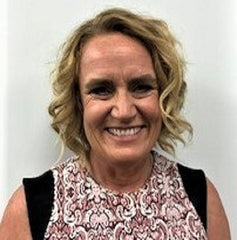Shoulder injuries after cycling accident
by Margie Olds
Recent research in New Zealand shows that shoulder injuries after falling from bicycles in on the increase (click here for the research). Shoulder injuries caused by falling from a bike can be categorised in four types. Shoulder bracing can help with recovery and get you back on the bike sooner.

The four types of shoulder injuries when you fall off your bike
1. Posterior shoulder dislocation
- Falling forward and landing on your hand can result in a posterior shoulder dislocation. In an posterior shoulder dislocation, the shoulder moves backwards in the socket and needs to be moved back into place. Shoulder braces can help with these types of injuries by reducing the risk of further injury and assisting recovery. The Flawless Motion multi-directional brace is the best support for posterior shoulder instability as it gives support at the back of the shoulder and helps to prevent further shoulder dislocations. Wearing the brace can give you confidence when you are back on the bike.
2. Acromio-Clavicular Joint Injury
- An AC joint injury involves disruption of the join between the collar bone and the shoulder blade. In severe cases of these injuries (Grade 4 and above) surgery is required. For more information on ACJ injuries, check out our blog here. The Flawless Motion ACJ shoulder brace can help offload the AC Joint and promote healing by supporting the joint.
3. Anterior shoulder dislocation
- The third type of injury that occurs with a bike accident is an anterior shoulder dislocation. An anterior shoulder dislocation typically occurs because you either fall with your arm arm outstretched and your arm is effectively 'levered' out of its socket. Another mechanism for an anterior shoulder dislocation is that you fall from your bike and land on your back of your shoulder The shoulder is pushed forwards out of its socket in an anterior dislocation. The shoulder brace that is best for people with anterior shoulder dislocations is the Flawless Motion anterior shoulder brace. This brace is particularly useful for people who want to get back riding and still protect their shoulder - particularly downhill or enduro riders. The brace gives support at the front of the shoulder, which decreases your risk of further injury. The mesh insert in the back of the shoulder brace prevents heat building up while riding, so the brace is comfortable to wear during periods of heavy exertion.
4. Rotator cuff tear
- Painful rotator cuff tears can occur in conjunction with a shoulder dislocation, usually in people over the age of 40 years. Small cuff tears can usually be treated by physiotherapy and respond well to treatment. Larger tears (greater than 3cm) may require a surgical opinion. Shoulder bracing can be advised for these injuries in order to protect from further injury once you get ready to ride again. The Flawless Motion multi directional shoulder brace is advised for these injuries to give you all over shoulder support and will improve your confidence when you are back on the bike. For support during the acute phase of your injury, the Flawless Motion rotator cuff brace comes with an additional short strap. This brace can support your shoulder when it is acutely painful and aid recover by supporting the ligaments and tendons.
For more details about the type of shoulder brace that you need, check out the difference between the anterior or multi-directional brace, watch this video, or email us for more information: info@flawlessmotion.com

Dr Margie Olds is a internationally renowned physiotherapist with a special interest in shoulder injuries. She developed the Flawless Motion braces to help people get back into sport as quickly and safely as possible. She has recently finished her PhD on predicting shoulder dislocations after injury. In her spare time she likes to race her husband up the hill (and down the single track). She recently completed her first enduro mountain bike race and was stoked to ride all of the trail features :)









